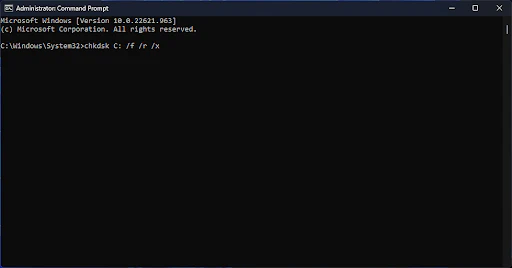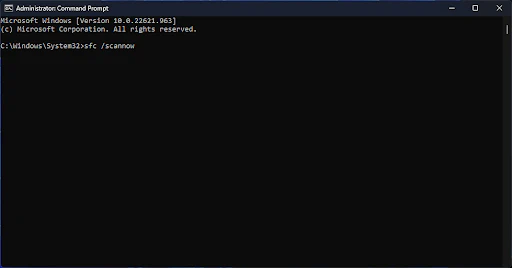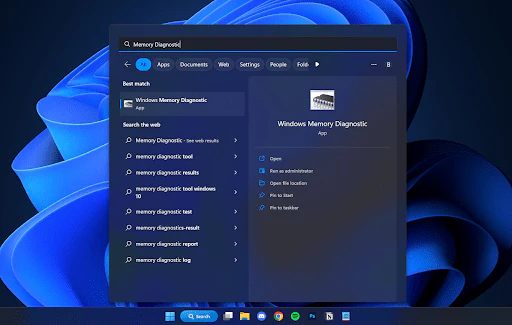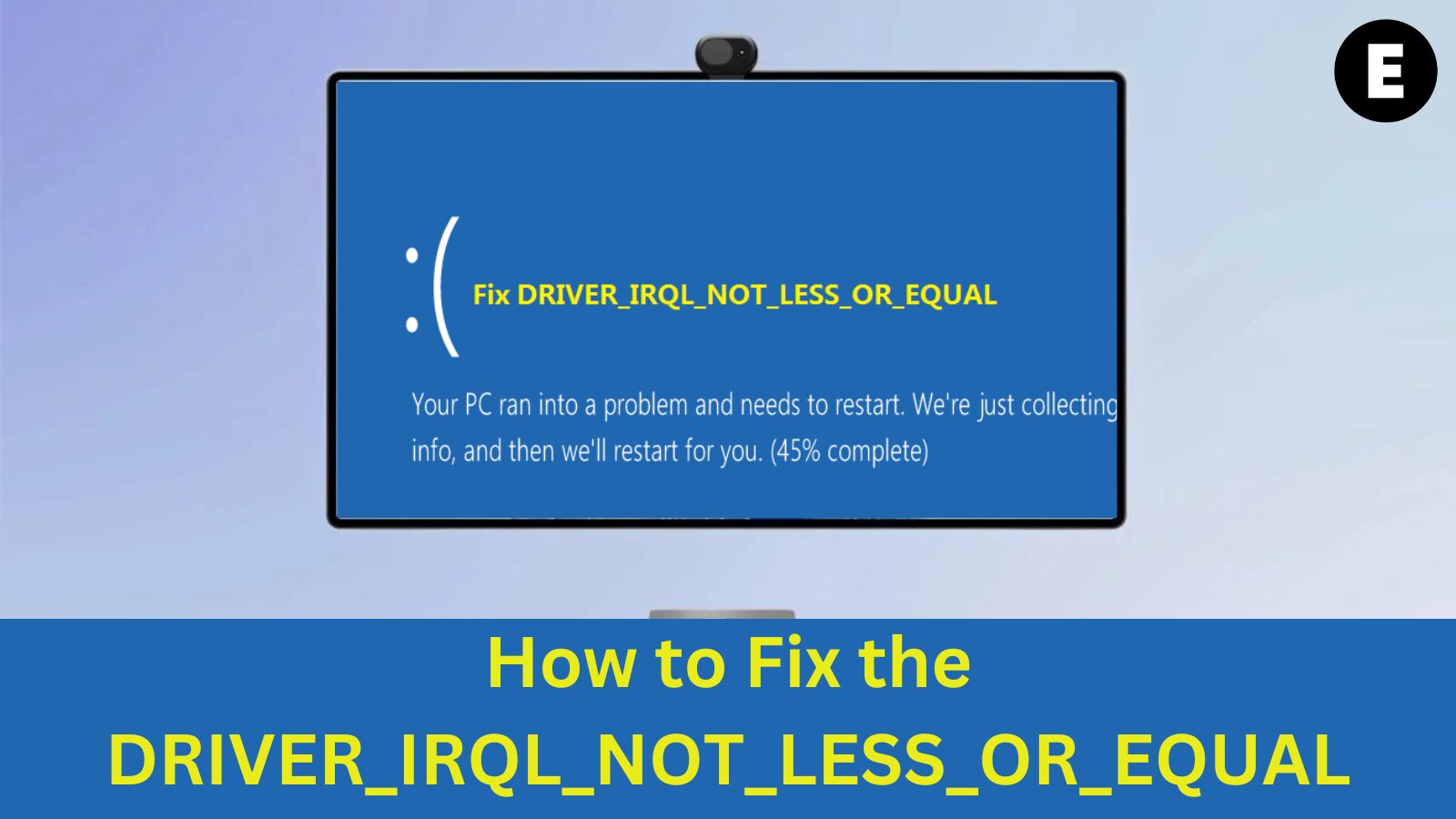Are you encountering the DRIVER_IRQL_NOT_LESS_OR_EQUAL error when starting up your Windows system? Don’t worry! While this error can seem intimidating, we’re here to help you resolve it step by step.
In this guide, you’ll learn:
✅ What causes the DRIVER_IRQL_NOT_LESS_OR_EQUAL error
✅ Effective troubleshooting methods
✅ How to prevent future system crashes
What Causes DRIVER_IRQL_NOT_LESS_OR_EQUAL?
If your computer boots to a blue screen displaying the DRIVER_IRQL_NOT_LESS_OR_EQUAL error, the issue likely stems from faulty network drivers.
This “netio.sys” error occurs when a driver improperly accesses or assigns a wrong memory address, disrupting system operations. Other potential causes include corrupt system files, faulty RAM, or malware infections.
Resolving the DRIVER_IRQL_NOT_LESS_OR_EQUAL blue screen error may seem complex, but this guide breaks it down into simple troubleshooting steps to help you identify and fix the problem effectively.
Fix DRIVER_IRQL_NOT_LESS_OR_EQUAL on Windows 11, 10, and 7
Looking for the best fixes for DRIVER_IRQL_NOT_LESS_OR_EQUAL on Windows 11, 10, or 7? Try these proven solutions:
- Run the Chkdsk Command
- Check Your RAM
- Disconnect Peripheral Devices
- Repair Corrupt System Files
- Use the Hardware and Devices Troubleshooter
- Run the Windows Memory Diagnostic Tool
- Reset Windows
These troubleshooting steps can resolve the DRIVER_IRQL_NOT_LESS_OR_EQUAL blue screen error effectively. Keep reading for a step-by-step breakdown of each fix.
1. Run the Chkdsk Command
One of the quickest ways to fix the DRIVER_IRQL_NOT_LESS_OR_EQUAL error is by using the built-in Chkdsk utility to scan and repair disk issues. Follow these steps:
- Open the search bar (Windows + S) and type Command Prompt.
- Right-click Command Prompt and select Run as Administrator.

- Click Yes when prompted by User Account Control (UAC).
- Type the following command and press Enter:
chkdsk C: /f /r /x

- Wait for the scan to complete, then restart your PC to see if the blue screen error is resolved.
By following these steps, you can quickly determine if disk errors are causing the DRIVER_IRQL_NOT_LESS_OR_EQUAL BSOD and take action to fix them.
2. Check Your RAM
Faulty or improperly installed RAM can trigger the DRIVER_IRQL_NOT_LESS_OR_EQUAL blue screen error. Follow these steps to clean and reseat your RAM for optimal performance:
- Power off your PC and unplug it.
- Open the computer case and carefully remove the RAM sticks from their slots.
- Use compressed air to remove dust and debris from the RAM contacts.
- Dip a cotton swab in isopropyl alcohol, let it dry slightly, then gently clean the RAM contacts.
- Take a dry cotton swab to wipe off any remaining particles.
- Repeat this cleaning process for all RAM sticks in your system.
- Reinsert the RAM modules securely into their respective slots.
- Close the computer case and restart your PC to check if the BSOD error persists.
🔹 Laptop Users: Open the back cover and follow the same RAM cleaning process as you would on a desktop.
If the DRIVER_IRQL_NOT_LESS_OR_EQUAL error continues, consider running the Windows Memory Diagnostic Tool to check for deeper memory issues.
3. Disconnect Peripheral Devices
A DRIVER_IRQL_NOT_LESS_OR_EQUAL blue screen error can sometimes be triggered by faulty peripherals or conflicting drivers. To troubleshoot, follow these steps:
- Power off your PC completely.
- Unplug all peripheral devices, including:
- Mouse
- Keyboard
- External hard drives
- USB devices
- Printers and other accessories
- Restart your system and check if the error is resolved.
🔹 If your PC boots without the error, a peripheral might be the culprit.
- Reconnect each device one by one, restarting after each connection.
- If the DRIVER_IRQL_NOT_LESS_OR_EQUAL error reappears, you’ll know which device is causing the issue.
- Update or reinstall the drivers for the problematic peripheral or replace it if necessary.
By systematically eliminating potential hardware conflicts, you can quickly identify and fix the cause of this BSOD error.
4. Repair Your System Files
Corrupt or damaged system files can lead to the DRIVER_IRQL_NOT_LESS_OR_EQUAL blue screen error. Fortunately, Windows includes the System File Checker (SFC), a built-in tool that scans and repairs faulty system files. Follow these steps to run an SFC scan:
- Open the search bar by clicking the magnifying glass icon or pressing Windows + S.
- Type Command Prompt, then right-click it and select Run as Administrator.
- When the User Account Control (UAC) prompt appears, click Yes.
- Type the following command and press Enter:
sfc /scannow

- Wait for the System File Checker to complete the scan. If any corrupted files are found, the tool will automatically repair them.
Once the process finishes, restart your PC and check if the DRIVER_IRQL_NOT_LESS_OR_EQUAL error is resolved.
If the issue persists, consider running the DISM tool with these commands:
DISM /Online /Cleanup-Image /CheckHealth
DISM /Online /Cleanup-Image /ScanHealth
DISM /Online /Cleanup-Image /RestoreHealth
These commands will fix deeper system-level corruption that SFC might not be able to repair.
5. Run the Hardware and Devices Troubleshooter
Windows provides built-in troubleshooters to help fix common hardware-related issues, including the DRIVER_IRQL_NOT_LESS_OR_EQUAL blue screen error. The Hardware and Devices Troubleshooter can detect and resolve underlying driver or hardware conflicts.
Follow these steps to run the troubleshooter:
- Press (
Windows + R) to open the Run dialog box. - Type the following command and click OK:
-
msdt.exe -id DeviceDiagnostic
-

- The Hardware and Devices Troubleshooter will open. Click Advanced and ensure “Apply repairs automatically” is enabled.

- Click Next and wait for Windows to scan for hardware issues.

- If Windows detects a problem, it will automatically apply a fix to restore your system.
If the troubleshooter doesn’t find any issues, you may need to manually investigate hardware conflicts by updating drivers, checking device connections, or testing components individually.
6. Use the Windows Memory Diagnostic Tool
Faulty RAM modules can cause the DRIVER_IRQL_NOT_LESS_OR_EQUAL blue screen error. Windows includes a Memory Diagnostic Tool that helps detect and resolve memory-related issues.
Follow these steps to run the Memory Diagnostic Tool:
- Press
Windows + Sand type Memory Diagnostic, then click the result.

- In the pop-up window, select “Restart now and check for problems (recommended).”
- ⚠ Save your work before proceeding, as your PC will restart.

- Your system will reboot and begin scanning your RAM for errors.
- Once the scan completes, your PC will restart again, and the results will be displayed.
🔹 If memory issues are detected, you may need to replace or reseat your RAM modules to fix the BSOD error.
7. Reset Windows
If none of the previous solutions resolve the DRIVER_IRQL_NOT_LESS_OR_EQUAL blue screen error, resetting Windows can help by restoring your system to its factory state. This process removes corrupted system files and resolves deep-rooted software conflicts.
⚠ Before You Begin:
- Backup your important files to avoid data loss.
- Windows 10 & 11 allow you to keep personal data during the reset.
How to Reset Windows:
- Open Settings by clicking the Start menu or pressing
Windows + I. - Search “Reset” in the search bar and select Reset this PC (or navigate to Update & Security > Recovery).
- Under Reset this PC, click Get started.
- Choose an option:
- Keep my files → Removes apps & settings but retains personal files.
- Remove everything → Wipes all data, restoring Windows to a fresh state.
- Follow the on-screen instructions and wait for Windows to complete the reset process.
🔹 After resetting, reinstall essential drivers and software to ensure system stability.
Conclusion
Fixing the DRIVER_IRQL_NOT_LESS_OR_EQUAL blue screen error may seem overwhelming, but by following these step-by-step troubleshooting methods, you can effectively resolve the issue and restore your system’s stability.
We hope this guide has helped you fix the DRIVER_IRQL_NOT_LESS_OR_EQUAL error on your PC. If you have any further questions or need additional assistance, feel free to reach out for support.
One more thing
If you’re in search of a software company that embodies integrity and upholds honest business practices, your quest ends here at Ecomkeys.com. As a Microsoft Certified Partner, we prioritize the trust and satisfaction of our customers. Our commitment to delivering reliable software products is unwavering, and our dedication to your experience extends far beyond the point of sale. At Ecomkeys.com, we provide a comprehensive 360-degree support system that accompanies you throughout your software journey. Your trust is our foundation, and we’re here to ensure that every interaction with us is a positive and trustworthy one.

